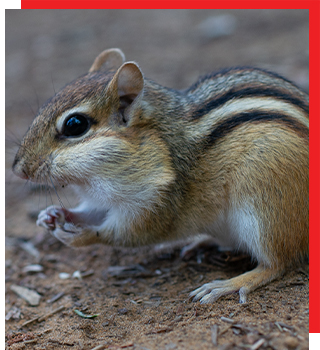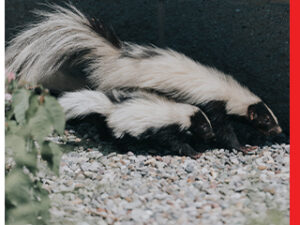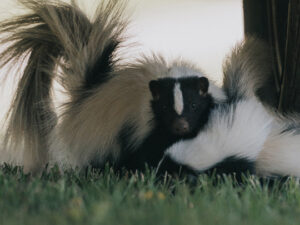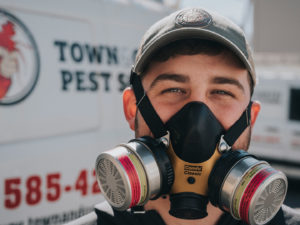
Keep Wildlife Where It Belongs: Your Complete Protection Guide
Wild animals belong in nature, not in your home. When raccoons raid your attic, squirrels nest in your walls, or bats roost in your eaves, you need professional wildlife control that prioritizes both safety and humane practices. Understanding how to prevent and address wildlife intrusions protects your family, property, and the animals themselves.
Wildlife encounters have increased significantly as urban development encroaches on natural habitats. Animals adapt by seeking shelter, food, and nesting sites in residential areas. While these creatures play vital roles in their ecosystems, they can cause extensive property damage and pose health risks when they invade human spaces.
Effective wildlife management requires specialized knowledge, proper equipment, and adherence to local regulations. Professional services ensure animals are handled safely and relocated appropriately, while comprehensive exclusion methods prevent future intrusions.
Common Wildlife Invaders and Their Warning Signs
Different animals exhibit distinct behaviors and leave specific evidence of their presence. Recognizing these signs early allows for prompt intervention before minor issues become major problems.
Raccoons: The Persistent Problem Solvers
Raccoons possess remarkable dexterity and intelligence, making them particularly challenging to exclude. These nocturnal animals typically enter homes through roof vents, chimneys, or damaged siding. Common signs include:
- Loud scratching or thumping sounds in walls or ceilings, especially at night
- Torn shingles or damaged vents
- Large, distinctive paw prints around entry points
- Scattered garbage or pet food
- Strong ammonia-like odors from urine accumulation
Raccoons can carry rabies and raccoon roundworm, making professional removal essential for family safety.
Squirrels: Year-Round Acrobats
Both gray and flying squirrels seek warm, dry spaces for nesting. They’re most active during daylight hours, making detection easier than nocturnal species. Warning signs include:
- Scampering sounds in walls, especially during morning and evening hours
- Chewed holes in eaves, soffits, or roof areas
- Gnawed electrical wires, creating fire hazards
- Acorns, nuts, or nesting materials in unexpected locations
- Small, pellet-shaped droppings in concentrated areas
Squirrels can cause significant structural damage through persistent gnawing and nesting activities.
Bats: Beneficial but Problematic
While bats provide excellent insect control, they create health hazards when roosting in homes. Bat guano accumulates quickly and can cause respiratory issues. Signs of bat presence include:
- High-pitched chittering sounds, particularly at dusk
- Small, dark stains around entry points
- Accumulating droppings that crumble when touched
- Strong, musty odors in affected areas
- Visual sightings during evening hours
Bats require specialized removal techniques due to their protected status in many areas.
Opossums: Opportunistic Wanderers
North America’s only native marsupial, opossums seek shelter in crawl spaces, sheds, and under porches. They’re generally less destructive than other wildlife but can create unsanitary conditions. Indicators include:
- Slow, shuffling movements in walls or under structures
- Dog-like tracks with distinctive thumb prints
- Overturned garbage cans or scattered pet food
- Musky odors in enclosed spaces
- Damage to gardens or compost areas
Prevention Strategies That Actually Work
Successful wildlife control focuses on making your property less attractive and accessible to unwanted animals. Comprehensive prevention addresses food sources, shelter opportunities, and entry points.
Secure Food Sources
Animals venture into residential areas primarily seeking easy meals. Eliminating these attractions significantly reduces wildlife encounters:
- Store garbage cans in secure, covered containers or sealed areas
- Remove pet food immediately after feeding, especially outdoors
- Clean barbecue grills thoroughly after each use
- Harvest fruits and vegetables promptly, removing fallen produce
- Install tight-fitting lids on compost bins
- Use squirrel-proof bird feeders or remove feeders entirely during problem periods
Eliminate Shelter Opportunities
Wildlife seeks safe, protected spaces for nesting and hiding. Reducing available shelter makes your property less appealing:
- Trim tree branches at least six feet away from rooflines
- Remove brush piles, tall grass, and overgrown vegetation near structures
- Seal gaps under decks, porches, and sheds with hardware cloth
- Store firewood at least 20 feet from buildings and elevated off the ground
- Clear debris from gutters and roof areas regularly
Professional Exclusion Methods
Effective wildlife exclusion requires understanding animal behavior and using appropriate materials. Professional-grade exclusion typically involves:
- Installing heavy-duty screening over vents, chimneys, and openings
- Sealing entry points with materials animals cannot chew through
- Adding one-way exclusion devices that allow animals to exit but prevent re-entry
- Reinforcing vulnerable areas with metal flashing or hardware cloth
- Applying wildlife-specific deterrents in appropriate locations
When to Call Professional Wildlife Control
While some prevention measures can be DIY projects, active wildlife intrusions require professional intervention. Attempting to handle wildlife removal yourself poses significant risks to both you and the animals.
Safety Concerns
Wild animals can carry various diseases transmissible to humans, including rabies, histoplasmosis, and parasites. Stressed or cornered animals may attack, causing serious injuries. Mother animals protecting young become particularly aggressive.
Professional wildlife technicians use proper safety equipment and techniques to minimize risks during removal and cleanup processes.
Legal Considerations
Many wildlife species are protected by federal, state, or local regulations. Improper handling or removal can result in significant fines and legal consequences. Licensed professionals understand these regulations and ensure compliant removal and relocation practices.
Effective Results
Professional wildlife control services provide comprehensive solutions that address immediate problems and prevent future issues. Their expertise in animal behavior, exclusion techniques, and cleanup procedures delivers lasting results that DIY approaches typically cannot match.
The Wildlife Control Process
Professional wildlife management follows a systematic approach designed to resolve current issues while preventing recurrence.
Thorough Property Inspection
Experienced technicians conduct comprehensive property assessments to identify active infestations, potential entry points, and contributing factors. This inspection includes:
- Exterior examination of rooflines, vents, and structural vulnerabilities
- Interior assessment of damage, contamination, and animal activity
- Identification of species involved and extent of infestation
- Documentation of conditions that attract wildlife to the property
Humane Animal Removal
Once animals are located, professionals use species-appropriate removal methods that minimize stress and ensure animal welfare. Techniques vary based on the species, location, and local regulations but always prioritize humane treatment.
Comprehensive Exclusion
After animal removal, technicians seal entry points using materials and methods specific to the wildlife species involved. This step prevents re-entry and protects against future intrusions by the same or different species.
Cleanup and Sanitization
Wildlife infestations often leave behind contaminated insulation, droppings, and damaged materials. Professional cleanup includes removing contaminated materials, sanitizing affected areas, and restoring damaged insulation or structures.
Ongoing Monitoring
Reputable wildlife control services provide follow-up inspections to ensure exclusion measures remain effective and no new issues have developed.
Protecting Your Investment Long-Term
Wildlife damage can be extensive and expensive to repair. Proactive wildlife management protects your property value and prevents costly structural repairs, electrical damage, and health hazards.
Regular property maintenance, seasonal inspections, and prompt attention to minor issues prevent small problems from becoming major infestations. Working with experienced wildlife professionals ensures your family’s safety while protecting your home investment.
At Town & Country Pest Solutions, we understand that effective wildlife control requires expertise, proper equipment, and commitment to humane practices. Our comprehensive approach addresses current wildlife issues while implementing prevention strategies that keep your property protected year-round.
Don’t let wildlife take over your home. Contact our experienced team today to schedule a thorough property assessment and develop a customized wildlife management plan that keeps your family safe and your property secure.












